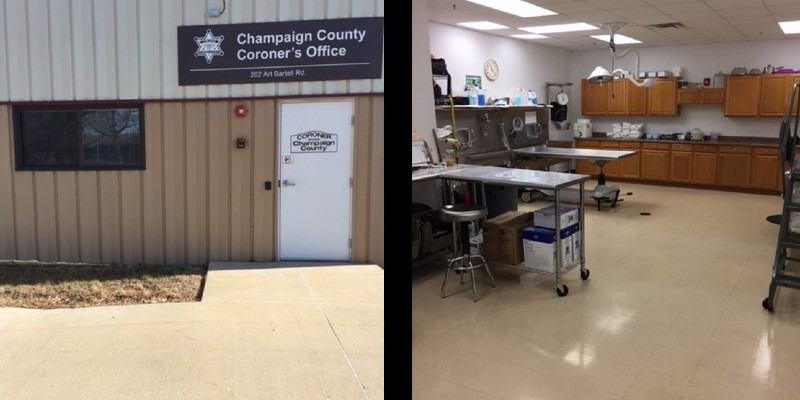One of the county races in the upcoming election is for County Coroner. It’s a position we don’t often talk a lot about except when it’s on our ballot, or if we find ourselves facing the unfortunate circumstance of a loved one’s death, should they pass away without being attended by a physician. This article isn’t about that race. However, it gives some insight into one aspect of the investigative work that happens in the office, from the perspective of someone who is doing that work.
Cris Hughes is a Clinical Associate Professor in Anthropology at the University of Illinois. More specifically, she’s a forensic anthropologist. In addition to her work at the University, she volunteers her time in the Champaign County Coroner’s Office, assisting in investigations when a case requires someone with her expertise. So, what type of cases would those be?
According to Hughes, “a forensic anthropologist is someone who uses skeletal variation to help inform a forensic investigation. We don’t work on fresh bodies, that’s something a forensic pathologist does. We’re experts in what we call hard tissue.” She, and others in her field, are called into cases where the soft tissues are no longer in a state where they could be helpful to the investigation, basically too far along in the decomposition process. Hughes can determine factors such as sex, age, estimated height, and even ancestry from looking at skeletal remains, then compare that to information in a database for missing and unidentified persons to begin to narrow down the possibilities of who the person might be. The other piece of the puzzle is providing information from the remains to help the coroner determine cause of death. “We do things like estimate is it blunt force like a bat or a fist or a car, sharp force trauma like an ax or a knife, or projectile trauma like a gunshot wound?”
Many in this line of work are like Hughes, they have some sort of faculty position, then work on investigations as they come up. As Hughes says “a majority of cases don’t have skeletal or decomposing remains. The vast majority of people who die are known, found quickly, and go through a traditional pathologist.” The work can be immensely important and impactful to the lives of those who are missing loved ones; that was one of the things Hughes recalls being in college when 9/11 happened, and three of her instructors went to Ground Zero to do forensic work. “That was really formative for me,” says Hughes.
Hughes began working with the Champaign County Coroner’s Office in 2013. After doing full time postdoc work in a medical examiner’s office on the border, working with migrant communities, she came back to assume a faculty position and reached out to Coroner Duane Northrup to make him aware of her presence and willingness to assist on area cases. He agreed to meet, they formed an easy connection, and he cleared lab space for her in the coroner’s facility to do intermittent casework. Now, her presence in Champaign County has become known to coroners in surrounding counties, who do not have the services of a forensic anthropologist at their disposal and find themselves with skeletal remains they don’t know what to do with. Northrup has connected her with those offices, and allows her to intake their cases. “Champaign County will intake cases from any other surrounding county that wants me to work a case. This is a huge deal, because transfer of evidence is really important. They can’t just hand bones to me without extreme documentation and security.” Champaign County is ahead of the game in this respect. Many coroners don’t know to look for the services of forensic anthropologists, it’s mostly word of mouth, and there are only about four of them for the entire state of Illinois. A big part of Hughes’ work is educating coroners and others in law enforcement, as well as networking.
To Hughes, every case is interesting, but there are definitely those she would describe as “eye-opening”. She once worked on someone who had 174 stab wounds, all visible on the skeleton. “We really have to separate ourselves from the reality of the situation. When I think about that case I feel so depressed. A lot of us struggle with kids’ cases. It’s hard to see…The ones that stick with me are the ones that emotionally impact me.”
Hughes estimates a case might take her 40-80 hours to complete, depending on the complexity of the situation. But for her, the work is worth the reward, especially when it means bringing closure and possibly justice for families. “The cases to me that are most interesting are the cases where the trauma is really difficult to interpret, and you don’t think you’ll get anything out of it, but you work really hard and you’re able to infer something you didn’t know before.”








